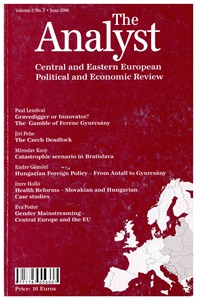Montenegro: A new state in the Balkans
Montenegro: A new state in the Balkans
Author(s): Srđan DarmanovićSubject(s): Politics / Political Sciences
Published by: Globális Tudás Alapítvány
Summary/Abstract: Montenegro has undergone two important political transitions in the past two decades. The first, which began in January 1989 when the old communist power was overthrown on the waves of Milosevic’s “anti-bureaucratic revolution,” ended single-party rule and introduced a multiparty system. At the same time, it established a new type of rule that lacked democratic features (1990–96). The second transition brought an end to this latter system and the creation of electoral democracy. Both transitions were significantly overshadowed by the issue of Montenegro’s status. Changes in this status in the course of the 20th century can be compared to a swinging pendulum: from the state’s termination in 1918 to its restoration within the communist confederation in 1945; to the repeated submission to Serb nationalism at the time of Yugoslavia’s collapse in 1990–92; all the way to the creation of an independent state, first through the gradual disintegration of the confederation with Serbia between 2002 and 2005, and then as a result of the complex referendum process in 2005–2006 that was closely supervised by the EU. The perennial dilemma of Montenegrin history remains the choice between independent statehood or union with Serbia. This has always been the question that has divided the opposing political forces in the various historical eras – generally with intense passion.
Journal: The Analyst - Central and Eastern European Review - English Edition
- Issue Year: 2006
- Issue No: 02
- Page Range: 41-56
- Page Count: 16
- Language: English

